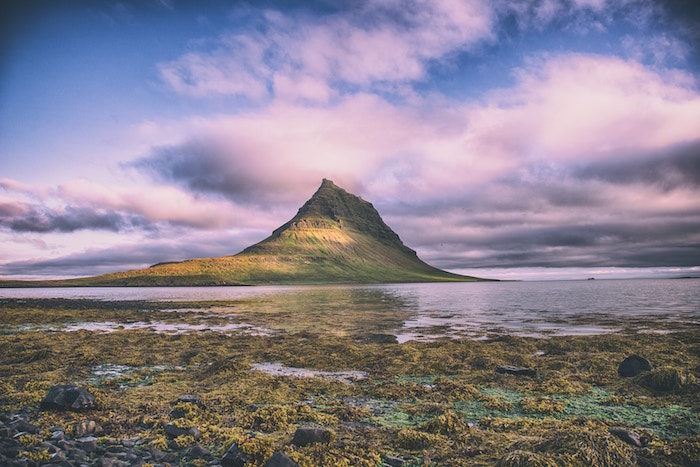If you keep up with climate change, the good news is scarce. But a silver, (or brown, or green, or red) lining can be found on the rocky continental shelves of the Arctic Ocean—Kelp. This macroalgae grow along 25 percent of coastlines and is an important habitat for thousands of ocean species. And, unlike Antarctic penguins or coral reefs, kelp is actually benefitting from warming ocean waters.
Kelp forests function much like forests above ground. They have several different layers, or ‘stories,’ each of which hosts a mini-habitat. For example, the understory of a kelp forest is very important for larval fish and invertebrate species, and many different types of seaweed live under giant kelp. All of these different marine plants buffer waves and provide food and protection for the animals living among them.
The Arctic Ocean is a huge potential habitat for kelp and other marine plants, which have formerly been restricted from growing here, due to the thick cover of sea ice and cold temperatures. New studies have shown that the productivity of Arctic kelp could more than double in the next 20-30 years. This means more food and habitat resources for delicate marine ecosystems and more carbon sequestration into the deep Arctic Ocean.
Melting sea ice is good news as well if you are a species of kelp. Sea ice causes ocean floor scouring, which makes it difficult for kelp species to take root. Also, with less ice-cover, there is more access to light, which is super important for photosynthesis. Even a slight reduction in ice-cover could lead to a huge jump in growth, scientists predict.
Kelp is also a superfood, rich in nutrients, lipids, and protein, and many cultures around the world treat it as a delicacy. For centuries, aboriginal and indigenous peoples have harvested and farmed kelp and other seaweed. Kelp itself is high in protein, lipids, and other important nutrients. Importantly, the oily lipids found in kelp could replace the use of fish oil in a variety of industrial, health, and agricultural settings. The need for fish oil is a huge contributor to over-fishing and ecosystem destabilization, so an alternative resource that can be sustainably farmed would help save many marine species.
In many countries, farmers are experimenting with green technology, 3D printing, and vertical farming to grow kelp and other seaweed. As a crop, the plant uses no polluting fertilizers, freshwater, or land space. It actually works as a pollution vacuum, sucking carbon and nitrogen out of the ocean waters. According to the World Bank, if the U.S. devoted 5% of its ocean waters to farm seaweed, it would help clean up 135 tons of ocean carbon.
Our world climate is a complex system with many interchangeable parts, some of which we don’t even understand as of yet. Knowing how, or what, or when certain environmental phenomena will happen is almost impossible, especially as the system gets more and more out of control. But the success of kelp and other marine plants show us a path for the future. We can continue to make the mistakes of the past—or we can learn and adapt. Kelp forests provide food and habitat for a multitude of species, sequester carbon and other dangerous pollutants, and can be used as a source of food, fuel, building material, and other products. We are only limited by our own imagination, discovery, and potential.
I am not trying to suggest that this is the miracle cure for climate change. But it is important to spend some time and energy preparing for the future because it’s coming. Kelp is not the only answer, but it is an example of a new industry that could help save our planet. By investing in green technologies that help to solve intersectional issues, we can solve many problems at the same time.
The type of creative ingenuity needed to find these solutions is a particularly human capability, and not one you can substitute with robots, Artificial Intelligence, or data processing. The IPCC has predicted that we only have twelve years to reverse or halt the effects of climate change, and that would require a globally coordinated and sustained effort, the likes of which have never been seen before. While some leaders choose to ignore these dire warnings or deny their truth, it might be time for us, as citizens of the planet, to start looking for solutions.
Related: Scientists Say This Is The Only Reliable Way To Reduce Climate Change In Time
Yes, We Need A Systematic Solution To Climate Change—But Why Your Actions Still Matter
Get more like this—Sign up for our daily inspirational newsletter for exclusive content!
__
Photo: Jonatan Pie on Unsplash





